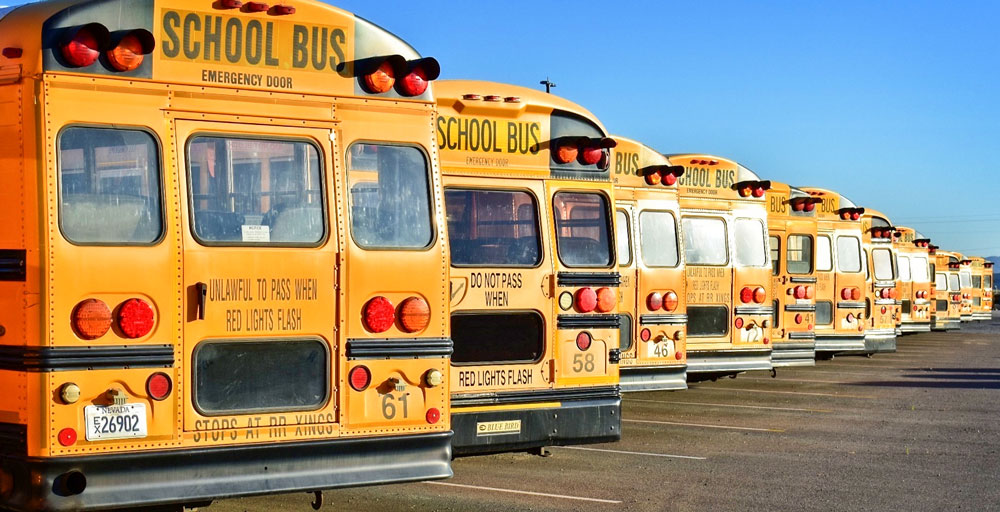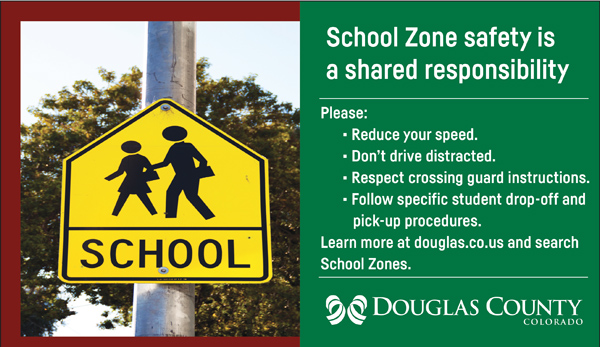School bus safety
Information provided by the National Safety Council; photo courtesy of Douglas County School District
Traumatic as some parents find it to see their kids off to school, school buses are an exceptionally safe way to travel. According to the National Safety Council, school buses are the safest form of ground transportation in the United States. In fact, children who do not use the school bus are eight times more likely to be injured on the way to or from school.
The safety of school buses is built into their design, a shape that’s remained essentially unchanged for more than 60 years and enhanced by advancements in safety technology.
School buses are known for a safety feature called “compartmentalization:” the protective envelope created by strong, closely spaced seats with energy-absorbing high backs. Unlike cars, in which passengers feel the brunt force of a crash, compartmentalization prevents the force of a bus crash from impacting children’s bodies. Unlike cars, in which passengers feel the brunt force of a crash, in compartmentalization the crash forces are absorbed by a vehicle structure that’s designed to protect the occupant.
Research and testing have not clearly demonstrated that seat belts on school buses provide a safety advantage over the passive protection provided by compartmentalization and strict federal safety standards. In fact, if not fitted and worn properly, seat belts can result in injuries to children.
School buses and police cars are the only vehicles authorized to stop traffic with their warning lights and stop arms. Nonetheless, the points at which kids board and exit the bus are the riskiest times of their commute. The National Safety Council urges parents to teach their children these guidelines, as well as how to safely cross any street.
Boarding the School Bus
- When waiting for the bus, stay safely off the street and away from traffic.
- Avoid horsing around or other behavior that can cause inattention.
- Line up away from the street as the school bus approaches.
- Wait until the bus has stopped and the door opens before stepping onto the roadway.
- Use the handrail when boarding the bus.
Exiting the School Bus
- At your stop, wait for the bus to halt completely before leaving your seat. Walk to the front door and exit, using the handrail.
- If you have to cross the street in front of the bus, walk at least 10 feet ahead of the bus along the side of the road until you can turn around and see the driver.
- Make sure that the driver can see you.
- Wait for the driver’s signal before beginning to cross.
- When the driver signals, walk across the road, keeping an eye out for sudden traffic changes.
- Do not cross the center line of the road until the driver has signaled that it is safe for you to begin walking.
- Stay away from the rear bus wheels at all times.
Crossing to Safety
- Stop at the curb or the edge of the road and look left, then right, and then left again before crossing.
- Continue looking in this manner until you are safely across.
- If your vision is blocked by a parked car or other obstacle, move out to where you can see other vehicles and drivers can see you. Then stop and look left-right-left again.

